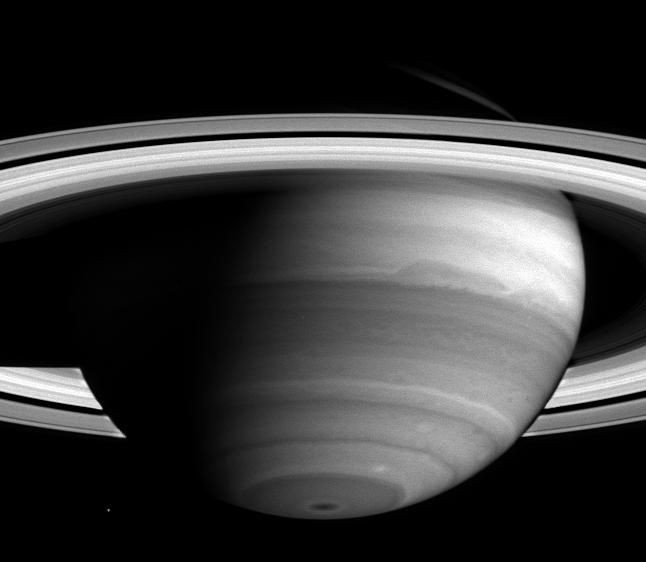Cassini Data Shows Shadows Cast By Saturn's Rings Affect Its Ionosphere

Cassini’s monumental journey came to an end in September as the tiny spacecraft plunged into Saturn’s gassy surface. But, as the satellite entered the final phases of its entry into Saturn, it sent back valuable never-seen-before data and images from near the planet's surface.
The images sent back from between Saturn’s surface and its magnificent rings provided scientists a new way at looking at the functions and use of the rings, which are formed of rocks and space dust.
New data from Cassini-Huygens spacecraft's final moments orbiting the planet, taken from altitudes between 2,600 and 4,000 kilometers, has shown scientists that shadows cast by the rings around the planet can actually change its atmosphere.
The new findings made by researchers from the Swedish Institute of Space Physics and NASA Goddard Space Flight Center demonstrate that the rings block the sun's ultraviolet radiations, reducing ionization in regions under the shade.
Scientists analyzing the data saw a stark difference between the particles present in the northern and southern parts of the planet’s ionosphere, which consists of charged particles.
Saturn’s ionosphere begins at around 186 miles above the planet's surface and stretches to as high as 3,100 miles. This region is populated by particles that have been ionized, or become charged when the sun’s energy knocks off their electrons.
Saturn has several rings, the major ones being A, B and C rings. Researchers studying the effect of these rings noticed that the A and B rings were creating a dip in the amount of ionization in the southern part of the ionosphere by blocking out the sun.
The team made the findings using data from Cassini’s Radio and Plasma Wave Science (RPWS) instrument package collected during its final months as it entered Saturn’s vast ionosphere. It was published as a study in the journal Science, and concluded that the B-ring and most of the A-ring must be opaque to extreme ultraviolet radiation. Meanwhile, the effect was not observed for the C and D rings, which meant they allowed ultraviolet radiation to pass through.
The data also revealed vast differences in electron density between orbits. The degree of fluctuations couldn’t be explained by the shadows cast by the rings alone.
A phenomenon first theorized in 1980s and known as “ring rain” was chalked out to be the culprit.
The ring rain's effect occurs in Saturn's ionosphere, which gets charged when exposed to a flow of energetic particles or solar radiation. This charged ionosphere causes charged particles from the rings to "rain down" along the planet's magnetic field line.
In the process, they neutralize the glowing triatomic hydrogen ions and plausibly cause the fluctuations observed.
This phenomenon, which has never actually been documented, is not the only possibility. The team says that even strong longitudinal winds often have a profound effect on electron density.
Further analysis of the plethora of Cassini data could reveal further information about the fascinating rings of Saturn. Cassini made 22 final swoops around Saturn before its “final plunge." The study has used data from only half of these orbits, and used no data from the final plunge.
© Copyright IBTimes 2024. All rights reserved.





















